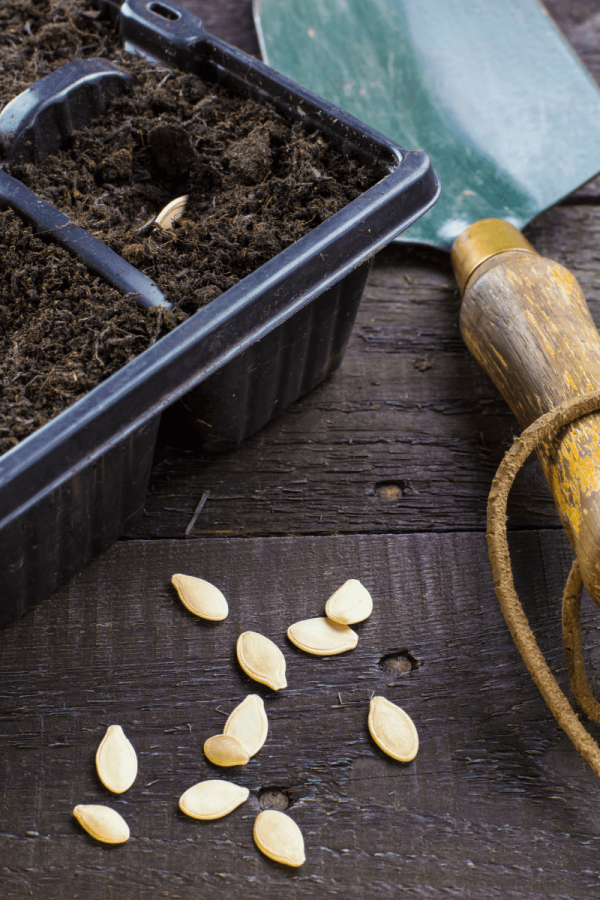Ready to grow your own pumpkin patch, but don’t know when to plant? We’ve got you covered!
Table of Contents
What is the best month to plant a pumpkin?
While pumpkins are predominantly an autumn crop, they need to be planted well before that. Like other squash, pumpkins like it hot! Transplant pumpkin seedlings or direct sow seeds in the garden two to three weeks after your zone’s last frost date. We’re in zone 6b, which means we plant in mid to late May, but your schedule may vary.
If you live in a cooler climate, you can give your pumpkin plants a head start by warming the soil before planting. Lay black plastic over the bed for 7-10 days before planting. Remove the plastic when you plant, and keep the plants protected with a layer of mulch and a row cover until the temperatures warm.
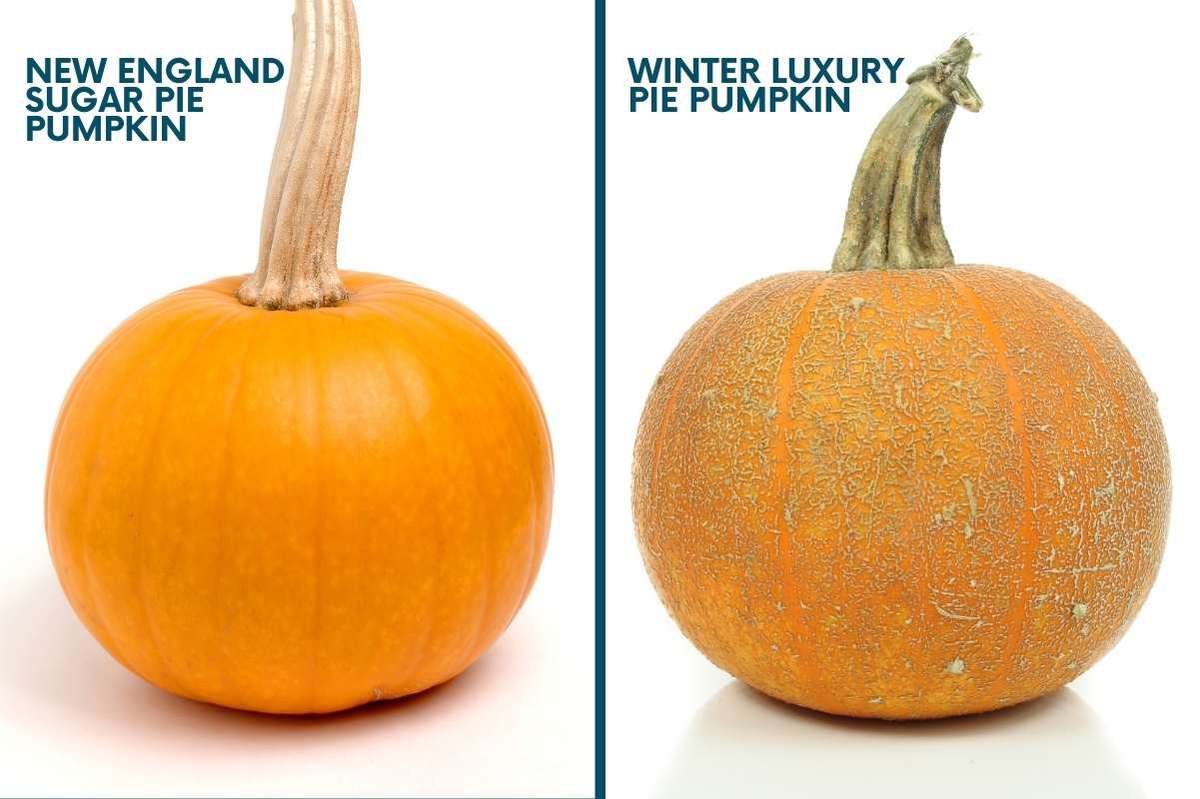
What kind of pumpkin should I grow?
There are over 150 (!!) types of pumpkins, and the options can get a little overwhelming. These are some of our top choices:
- New England Sugar Pie Pumpkins are small orange pumpkins with sweet flesh, perfect for baking into pies and other dishes.
- Winter Luxury Pumpkins are one of our go-tos. They are another small sugar pumpkin with sweet, tender flesh.
- Howden Pumpkins are a great choice if you want a classic Halloween pumpkin. Howdens are tall, round, and well-shaped for carving.
- Dill’s Atlantic Giant Pumpkins may be the way to go if you want giant pumpkins.
- Long Island Cheese Pumpkins are heirloom pumpkins that are a dusty tan color. They can be used as decor, but they also store well and taste great in savory dishes like soups.
How long do pumpkins take to grow from seed?
Pumpkins have a LONG growing season. Depending on the pumpkin variety, you’ll be harvesting pumpkins in 75-110 days.
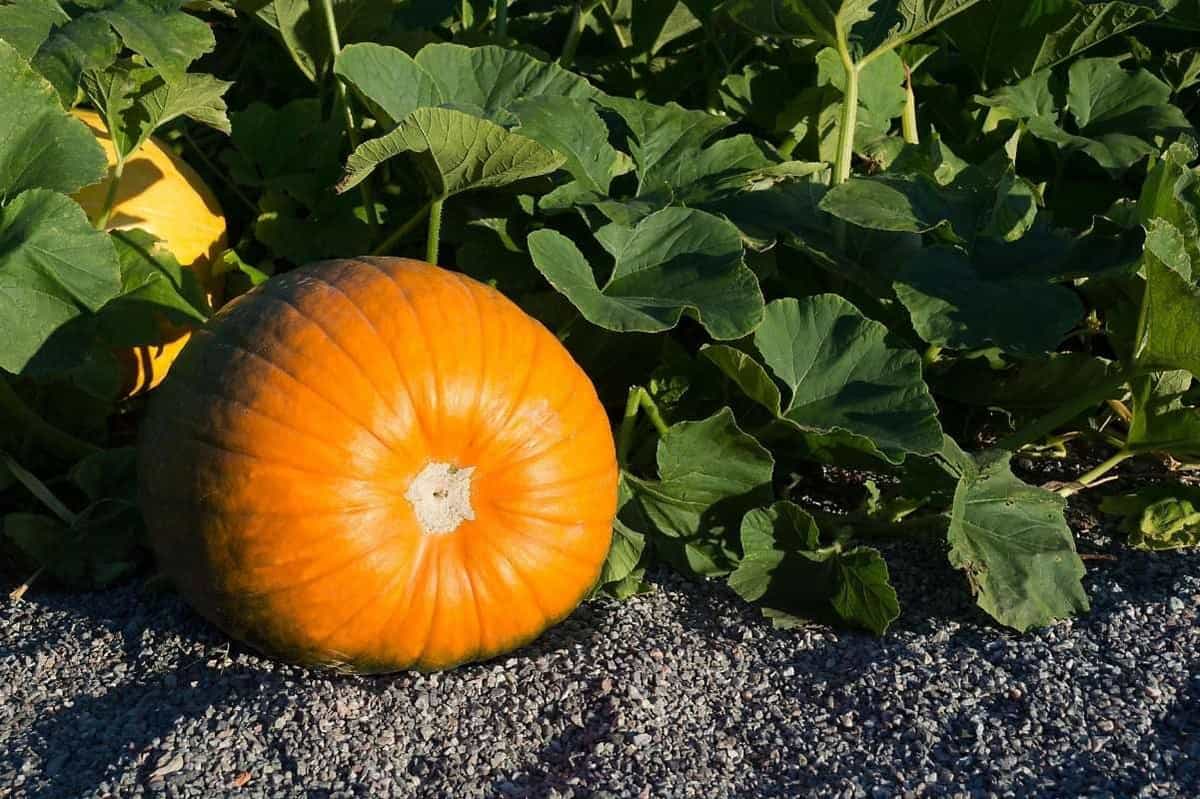
Should you start pumpkin seeds indoors?
If you can avoid transplanting pumpkins, you should. They greatly prefer being direct sown from seed. However, on average, pumpkins take 100 days to mature, so gardeners in cooler climates may need to start their plants indoors for a headstart.
If you do start pumpkin seeds indoors, select seedling pots that will leave the roots undisturbed when you need to transplant them. Soil blocks, newspaper pots, or peat pots are all good choices.
To start seeds indoors:
- Fill seedling pots with sterile seed starting medium. Sow two to three seeds 1″ deep in each pot.
- Gently water, and keep the medium moist until the seeds germinate. Keep the seeds warm (ideally 80-85°F).
- Once plants have their true leaves, thin the seedlings to one per pot. When the plants have two to four sets of true leaves and the soil outdoors is warm, harden off the seedlings to transplant to the garden.
- Work well-aged manure, compost, or fertilizer into the soil, then dig a hole a little wider than the seedling pot.
- Add a balanced fertilizer or compost to the hole, then add in the seedling. Try to disturb the roots as little as possible, and firm the soil around the plant with your hands.
- Water the plant and apply a layer of mulch around the base to retain moisture and suppress weeds.
How late can I plant pumpkin seeds?
The important thing to remember is that pumpkins can take a long time to grow—at least a hundred days! You’ll want to plant pumpkins between May and early July in most areas, depending on your garden zone. Once you hit late summer, you may not have time for the pumpkins to fully mature before fall brings cold soil and air, which will halt the growth.
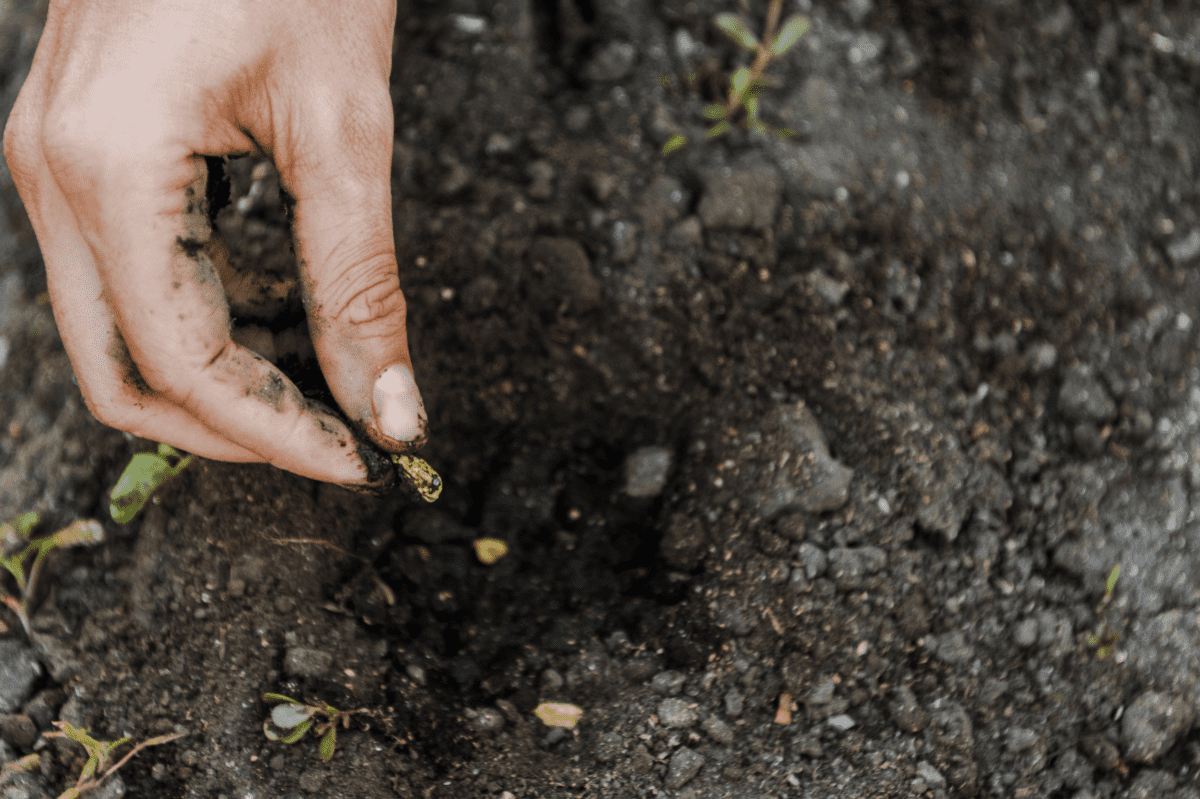
Can you plant pumpkin seeds straight from a store-bought pumpkin?
Unfortunately, not usually. Pumpkins often cross-pollinate with other squash, so you don’t know what kind of squash you’re going to grow! Only try this if you don’t care what kind of squash or pumpkin you get, know the fruit wasn’t irradiated, and want to experiment.
Pumpkins from the grocery store are also often irradiated so that the seeds won’t grow—so seeds from those definitely won’t work!
How do you sow pumpkin seeds directly?
If your pumpkin growing season is long enough, we recommend direct sowing pumpkin seeds. We’ve done side-by-side tests in our 6B gardens of transplanted seedlings versus direct-sown pumpkins, and found that their growth evens out within about a month.
- Select a spot that gets full sun and has well-draining soil. Work a layer of well-aged manure, compost, or fertilizer into the top of the soil.
- Warm the soil. In a cooler climate, spread black gardening plastic or a floating row cover over the growing space to warm up the earth for 7-14 days so the seeds can germinate.
- Plant the seeds. Once the soil has warmed to at least 70°F and all danger of frost has passed, sow the seeds in hills or rows. For hills, make a mound of earth around a foot high and plant four to five seeds 1″ deep. Each hill should be four to eight feet apart. For rows, plant seeds 1″ deep, 6-12″ apart. Rows should be six to ten feet apart.
- Thin seedlings. You’ll see seedlings popping up in 5-7 days. Once the seedlings are two or three inches tall, thin the pumpkin seedlings by snapping the unwanted plants off near the base or snipping them off. Yanking the plant out of the soil will disturb the delicate root system of the remaining pumpkin plants. Thin plants to 2-3 per hill or one plant every 18-36 inches (depending on the pumpkin variety) in rows.
Growfully Protip
Planting in hills is a better option in cooler climates, as it allows the soil to warm up faster.
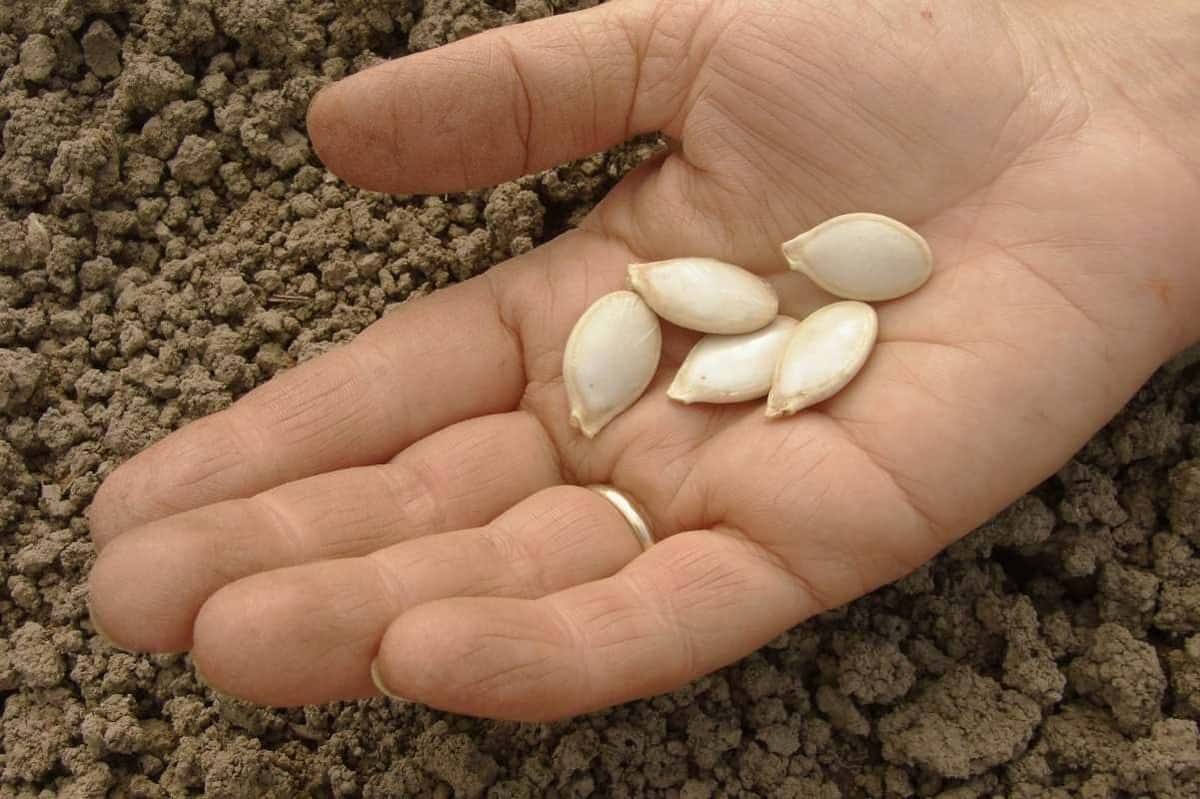
How many pumpkin seeds should I plant?
How many pumpkins you get will depend on the type of pumpkin you’re growing, the climate, and the growing conditions. On average, you’ll get about five big pumpkins (like the kind you’d use for jack-o-lanterns or other large varieties) from a vine, or up to a dozen miniature pumpkins or smaller pie pumpkins.

